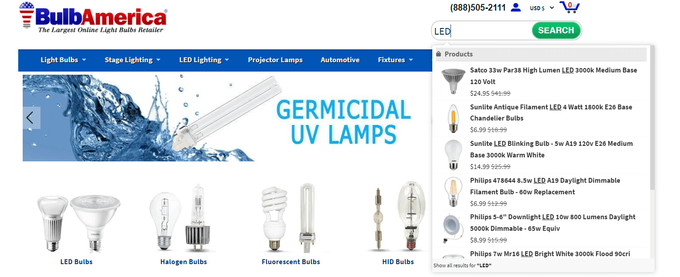How to Navigate Internal Site Search Analysis
Analyzing internal site search data helps businesses understand user behavior and preferences, improving content strategy and site usability.
Updated November 19, 2024

Understanding your customers' needs is essential for any thriving online business. Internal site search analysis plays a crucial role in this, embodying a key strategy within site search optimization to increase your conversion rate. It's a fantastic way to uncover what your visitors search for once they arrive at your website. By analyzing their search behavior, you can enhance the user experience through personalization, boost conversion rates, and increase customer loyalty.
Meet the Expert
Sandra Stepan, co-founder of SnapAdvantage, has 10 years in digital marketing, focusing on eCommerce expansion. With success in building 7-figure brands, she amplifies growth for top brands. An industry leader, Sandra is a trusted expert for marketing excellence.
Understanding the Importance of Internal Site Search Analysis
Why Should You Care about Site Search?
Almost 45% of people who visit online retail sites immediately head to the search bar. A good search experience significantly boosts their likelihood of making a purchase.
Your site's search function is not merely a convenience for your visitors; it's a crucial asset that provides deep insights into customer behavior. Users who utilize the search feature actively reveal valuable information about their preferences and intentions.
For example, if someone searches for "green tea" on your site, this indicates a potential interest in purchasing green tea products. Personalized search benefits both you and your customers by allowing these insights to guide the optimization of your product pages, landing pages, or your entire marketing strategy.
3 Benefits of Using Internal Site Search for eCommerce Businesses
- Improve the overall user experience by helping you tailor your site to match user expectations.
- Increase conversions by aligning your product offerings with user search trends.
- Provide insights into potential new product lines or areas where you could expand your business.
» Want to take search to the next level? Check out the best practices for eCommerce site search
3 Steps to Implementing Internal Site Search Analysis
1. Choose the Right Analytics Tool
Google Analytics: Your Insightful Partner
Google Analytics is a top choice for tracking user searches on your website. It comprehensively monitors search terms, user behavior, and conversion rates. With its smooth integration and customizable reports, Google Analytics is essential for gaining valuable insights and understanding how to improve user engagement and reduce cart abandonment rates.
Hotjar: Understanding User Behavior
Hotjar enhances your analytics tools by providing a visual insight into your visitors' interactions on your site. It uses heat maps, session recordings, and conversion funnels to uncover details about user engagement and search patterns, allowing you to refine the user experience.
2. Enhance User Experience With Actionable Insights
Monitoring and Adapting Use the data from your chosen analytics tools to monitor how visitors use your search function. Identify popular search terms within your site search and assess if users find what they're looking for. Use these insights to refine your content, improve search functionality, and ensure that your site meets user needs.
» Here's how to improve your content quality with Google Gemini
Visual Representation for Better Decisions Utilize Hotjar’s visual tools to examine user interaction in depth. Heat maps and session recordings can reveal common patterns and anomalies in search behavior, guiding you to adjust your site's layout and design for a better site search user experience.
Improve Product Placement for Faster Discovery Strategically place popular products for increased visibility and create curated product collections to simplify customers' purchasing journeys. Consider using something like our Smart Collection tool which uses the power of search to dynamically present your customers with the most relevant products, categories, and filters.
3. Engage and Learn from Your Audience
Direct Feedback Collection Incorporate feedback mechanisms like polls and surveys, especially after the search process, to gather direct input from your users. This feedback is invaluable for understanding user satisfaction with your search results, functionality, and personalized product recommendations.
Continuous Improvement The field of online search and user expectations is constantly evolving. It's important to regularly analyze your internal site search data, engage with user feedback, and make necessary changes. Conducting eCommerce A/B testing is also crucial. This iterative process ensures your site stays aligned with user needs, improving satisfaction and increasing conversions.
» Here are some tips to improve the customer experience with AI
How to Overcome Common Pitfalls with Internal Site Search
Don't Ignore Search Data
Skipping out on analyzing your search data? That's a direct path to missing sales opportunities. Make it a point to implement a regular review cycle, whether weekly or monthly, to keep tabs on user search behavior.
Example: Bulb America. By using our Search Solutions to recommend suggestions accurate to the initial product search, they were able to:
- Double their average order value (AOV)
- Increase the conversion rate by 10X from the search
- Increase in 3X search revenue compared to non-search sessions
Pay Attention to Zero Results Searches
When users hit a dead-end in their search, it's not just a frustration point for them; it's a lost opportunity for you. These searches signal what your audience wants but isn’t finding. Viewing these as opportunities to expand your offerings can open new revenue streams.
Don't Forget Mobile Users
Many of your audience is browsing on their phones, and if your site's search isn’t optimized for mobile, you're likely losing out on sales. Making sure your search function and site are mobile-friendly is essential in catering to this significant portion of users.
» Have an app for your store? Here's how to add a search bar
Utilize Search Data for Marketing
Your search data offers insights that can supercharge your marketing strategies. Using this data, you can refine your campaigns and attract more relevant customers. Let what your customers search for guide your marketing efforts, bridging the gap between user behavior insights and effective marketing.
Turning Search Queries Into Business Opportunities
Effectively navigating internal site search analysis is about understanding what your users are looking for and using this knowledge to boost merchandising strategies. It equips you with the intelligence to optimize the user experience and influence customer purchasing decisions.
In addition, you can more effectively explore potential business expansion opportunities. While it may initially seem complex, with the right tools and guidance, any eCommerce business can turn search queries into significant business opportunities.








